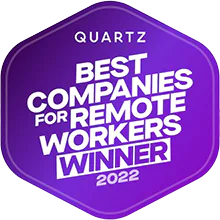Wonolo
Whether you’re focused on creating a new position, scaling your workforce, or simply performing a re-hire, it’s imperative that you create a staffing plan first. Doing so helps to ensure that all bases are covered within HR, but it also guarantees that the necessary departments are on the same page so that they can ultimately collaborate to bring on the candidates that fit the organization best. Once a comprehensive template is put into place, your company will be able to use it as a foundation for all of its staffing needs and data in the years to come.

Definition of a Staffing Plan
A staffing plan is a series of steps that are taken to confirm that an organization has two very important things determined: 1) the exact number of roles and positions within the company and 2) workers with the right skill sets filling these positions. Depending on the needs and size of the business, employees will be grouped by classification and/or department.
Because staffing plans are meant to be tailor-made for each specific organization, devised by HR in collaboration with other relevant departments, the details may shift from plan to plan. That said, all plans should be set up in a way that allows figures to be consulted quickly, a point that can help the decisions made around recruitment, development, and funding, be swift and seamless.
How to Create a Staffing Plan
Now that you know what a staffing plan is, it’s time to discuss how they are created. Here are some of the necessary steps that must be taken when creating all staffing plans:
1. Generate Comprehensive Job Descriptions and Lists of Requirements
Most times, job descriptions and their lists of requirements are written by HR managers, but when creating a new one, the task should only begin in one fashion – by having a conversation with the position’s corresponding manager. For instance, if the HR manager is creating a staffing plan that includes a warehouse associate, they must go to the warehouse manager before they get to writing. 
It’s a simple conversation that gives HR better insight into the exact duties that the warehouse associate will be performing on a daily basis. It will also inform their list of requirements, which should include these details:
- minimum prior experience required
- education history
- prior work history
- necessary certifications and licenses
This step will also give the HR manager an idea of how this position might relate to others in the company, which affords them a more relatable vision of what that department needs most.
2. Curate a Current Assessment of Current Employees
In many situations, the perfect candidate for the position is one that is already working for the company. To piggyback on the previous warehouse associate example, let’s say that an HR manager is creating a staffing plan in order to fill the position of a new shift manager. Because the operation already has dozens of hard-working warehouse associates clocking in and out every day, it may be smarter – and more cost-effective – to hire from the inside. (And thanks to Wonolo, you won’t need to worry about any shifts left open due to a promotion.)
Depending on the culture of the company, this proposition could be made by a slew of different people and for a slew of different reasons. Perhaps the warehouse manager already has a favorite picked out. Maybe accounting has slashed the budget, so HR decides to hire an established employee to skirt costly onboarding and training needs.
Whatever the catalyst may be, the responsible parties must do their best to create an even-handed assessment of all current employees whose skills fit the position. This can be done by observing, having discussions with managers/other employees, and examining the internal candidate’s recorded productivity.
3. Analyze Turnover and Business Trends
Since staffing plans are meant to serve as ongoing projects, it’s important that they are augmented and altered consistently so that they best reflect what’s going on in the company as well as the market.
One way to do this is to calculate the company’s turnover trends. Doing so will help HR plan for staffing ebbs and flows that would otherwise catch the department off-guard during organic spikes.
Along with turnover trends, the department must also take a holistic approach to business trends. This can be considered both internal and external. For internal, managers study changes in day-to-day regimens for the employees, such as shift changes and downsizes. As far as the external goes, things like mergers, acquisitions, and legislation must be weighed.
4. Devise Alternative Staffing Plans
All businesses are different, but most are connected by one very common thread – the need for more skilled workers during peaks. These days, more and more companies are keeping their budgets low by integrating an on-demand staffing system, like Wonolo.
When working in this phase, all previous job titles, descriptions, and budgetary considerations should be included. It also helps to have an estimated number of on-demand employees that may be needed during certain times of the year. The best part of using on-demand staffing is the flexibility, but when contracting companies are fully aware of their needs going in, the process can be implemented – and replicated – in the smoothest manner possible.






